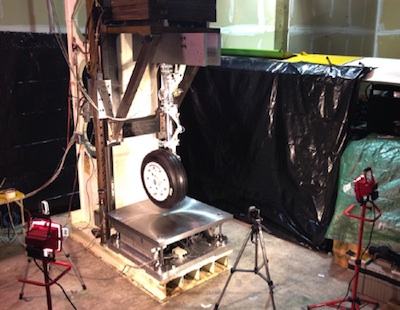- Joined
- Feb 13, 2008
- Messages
- 5,398
- Reaction score
- 8
- Points
- 0
- Location
- Khimki
- Website
- tigerofsiberia.livejournal.com
http://www.spaceflightnow.com/news/n1002/02ccdev/
http://www.spacedev.com/spacedev_advanced_systems.php



Just to return favor for "Konkordski" and such, I hereby propose a fitting moniker: "Spiralson" :rofl:
NASA is signing Space Act Agreements with the following companies under the Commercial Crew Development contest:
Each company is providing matching funding from other sources.
- Sierra Nevada Corp. of Louisville, Colo., will receive $20 million.
- Boeing Co. of Houston will receive $18 million.
- United Launch Alliance of Centennial, Colo., will receive $6.7 million.
- Blue Origin of Kent, Wash., will receive $3.7 million.
- Paragon Space Development Corp. of Tucson, Ariz., will receive $1.4 million
Sierra Nevada's $20 million award will go toward development of the Dream Chaser lifting body space plane. The Dream Chaser, designed to launch vertically and land on a runway, is based on NASA's HL-20 lifting body concept by the Langley Research Center
http://www.spacedev.com/spacedev_advanced_systems.php

A primary current focus of the Advanced Systems group is an overall space transportation system based on the NASA HL-20 lifting body spaceplane. Christened the Dream ChaserTM, it is being designed to carry passengers and cargo in the sub-orbital and orbital flights regimes, including flights to and from the International Space Station. Leveraging the work performed on the NASA HL-20, the Dream ChaserTM will provide a safe and affordable solution for commercial space operations, will launch vertically and land horizontally on conventional runways.
SpaceDev is currently working in conjunction with NASA Commercial Orbital Transporation Services (COTS) office to develop and configure the system for ISS servicing. In parallel, SpaceDev has signed a memorandum of understanding with United Launch Alliance (ULA) and is evaluating man-rating the Atlas 5 launch vehicle and configuring it for use with Dream ChaserTM to provide a launch configuration based on the exceptional heritage of the Atlas family of launch vehicles.

SpaceDev believes its SpaceDev Dream Chaser™ Space Plane system could be a viable Shuttle replacement for human space transport. By substituting a cargo pod in place of the manned vehicle, the same system could economically and safely deliver tons of cargo to the ISS or other LEO destinations. SpaceDev was a finalist in the COTS competition but was not selected to receive one of the two funded contracts.

Just to return favor for "Konkordski" and such, I hereby propose a fitting moniker: "Spiralson" :rofl:






